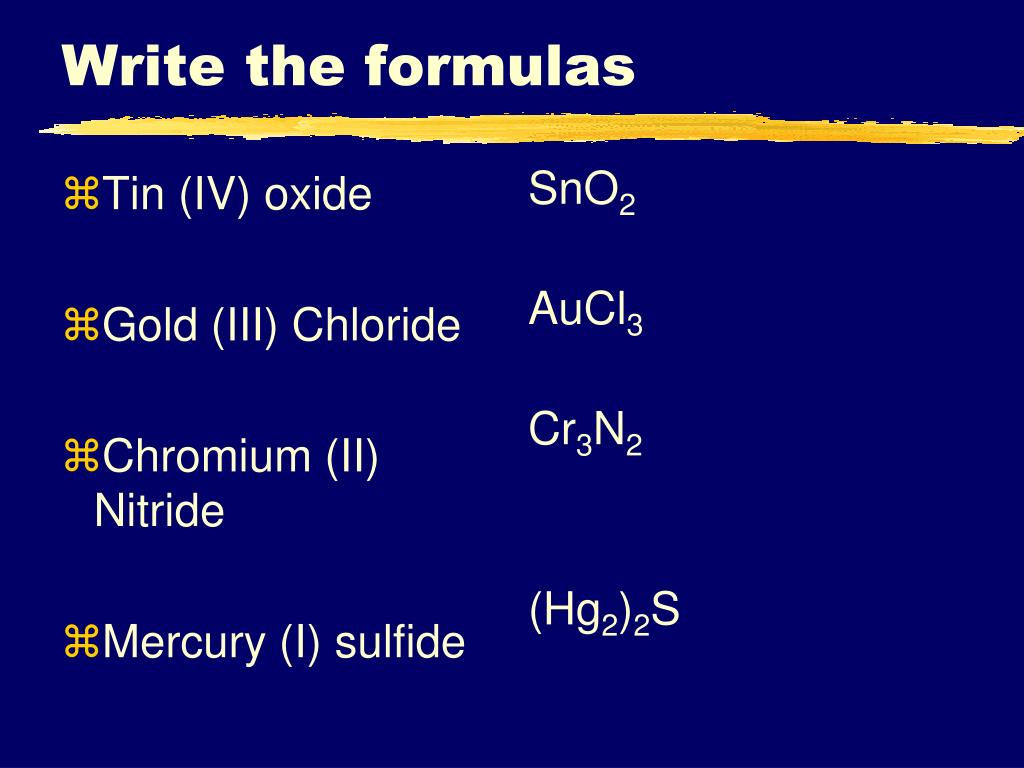
Used in chrome plating to decorate and protect the metal. Also used in green paints, ceramic glazes, and inks. Used for dyeing textile dyes, especially khaki fabrics. Widely used in the leather industry in the tanning process. The uses of chromium sulfate are as follows: Question 6: What is the use of chromium sulfate? If you write these two together, you will get Cr 2(SO 4) 3. Therefore, to obtain the formula for chromium (III) sulfate, exchange the charges of ions Cr +3 and SO 4 -2 to obtain Cr 2 and (SO 4) 3. The polyatomic ion SO4-2 is enclosed in parentheses. Therefore, the charge carried by the chromium cation Cr +3 is written as an index of the sulfate anion SO 4 -2, and the charge carried by the sulfate anion SO 4 -2 is written as an index of the chromium cation Cr + 3. Two chromium ions and three sulfate ions are required to balance the six valence bonds. Chromium III has a valence of 3 and sulfate has a valence of 2. To determine the formula for chromium (III) sulfate, we use a criss-cross method that exchanges the charges carried by the cations and anions present in the ionic compound. Since Cr 2(SO 4) 3 is a molecule, its oxidation number is 0. Now consider that the oxidation number of Cr is x. Question 1: What is the oxidation of Cr in Cr 2(SO 4) 3? Gives green color to varnishes, paints, ceramic glazes, and inks. Used to chrome plating other metals for decorative and protective purposes. Used as an electrolyte to obtain chrome metal. When Potassium sulfate reacts with chromium(III) sulfate, potassium chromium alum is formed. When chromium(III) sulfate reacts with cesium phosphate it gives Chromium phosphate and cesium sulfate, which is a double displacement reaction.Ĭr 2(SO 4) 3 + 2Cs 3PO 4 ⇢ 2CrPO 4 + 3Cs 2SO 4. Chromium (III) sulfate is formed by a double displacement reaction between chromium chloride and sulphuric acid.ĢCrCl 3 + 3H 2SO 4 ⇢ Cr 2(SO 4) 3 + 6HCl Physical properties of Chromium (III) SulfateĬhemical properties of Chromium (III) Sulfate. Chromium (III)sulfate can also be obtained by treating chromium hydroxide (III) with dilute sulfuric acid. 
In this process, a solution of sodium dichromate or potassium dichromate is dissolved in sulfuric acid to oxidize the alcohol.ģC 2H 5OH + 2 K 2Cr 2O 7 + 8H 2SO 4 ⇢ 2Cr(SO 4) 3 + 3CH 3COOH + 2H 2SO 4 + 11H 2O Chromium(III) sulfate is formed as a by-product of the Jones Oxidation process.Structure of Chromium (II) sulfate Production of Chromium (III) Sulfate Glucose Chemical Formula - Structure, Properties, Uses, Sample Questions.Lactic Acid Formula - Structure, Properties, Uses, Sample Questions.Acetone Formula - Structure, Properties, Uses, Sample Questions.Dimethylglyoxime Formula - Structure, Properties, Uses, Sample Questions.Formaldehyde Formula - Structure, Properties, Uses, Sample Questions.Silicon Dioxide Formula - Structure, Properties, Uses, Sample Questions.Glycerol Formula - Structure, Properties, Uses, Sample Questions.
How to calculate the Molarity of a Solution?. Borax Formula - Structure, Properties, Uses, Sample Questions. 
Potassium Hydroxide Formula - Structure, Properties, Uses, Sample Questions.Propan-2-Ol Formula - Structure, Properties, Uses, Sample Questions.Chloroform Formula - Structure, Properties, Uses, Sample Questions.

Vinegar Formula - Structure, Properties, Uses, Sample Questions. Sodium Fluoride Formula - Structure, Properties, Uses, Sample Questions. Citric Acid Formula - Structure, Properties, Uses, Sample Questions. Normality - Definition, Formula, Equations and Solved Examples. Ethyl Acetate Formula - Structure, Properties, Uses, Sample Questions. Difference Between Molarity and Molality. Hydrochloric Acid Formula - Structure, Properties, Uses, Sample Questions. ISRO CS Syllabus for Scientist/Engineer Exam. ISRO CS Original Papers and Official Keys. GATE CS Original Papers and Official Keys.







 0 kommentar(er)
0 kommentar(er)
